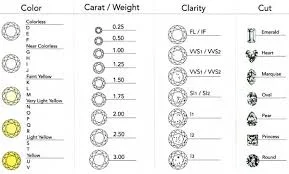This in-depth study is solely on "Gypsy-Stone setting", this technique needs to be explained in full. There are definitely NO SHORT CUTS in this technique.
The Scale of Difficulty is rated at "8.0 on the 10 Scale".
What tools are needed?
1) A light-weight riveting hammer.
2) 156C (Carbide) undercutting bur (measured at 1/3rd the size of the stone).
3) A full assortment of Pumice Wheels of #180 & #1,000 grit.
4) Onglette graver, with a #2 width (this graver will Bright-Cut the rim of the opening).
5) Polishing paper, with a grit of #800.
-----------------------------------------------------------------------------
The very first thing to do is to drill a hole 90% size of the stone. The 10% difference will allow for any overlapping of the metal, to the stone.
This is what the 'bearings' that you cut looks like. The bearings must not allow the stone to sit too high in the hole.
By keeping the "156C" bur in a vertical position. you gauge how & where the bur will will start the cutting.
How far into the hole will your 156C bur should be? Here is MY GUIDE.
The bur shaft must never be lowered into the hole. The teeth of the bur will define the correct DEPTH for the stone, once lowered and finally set.
This is another view of where the teeth of the bur will cut into the metal.
This is the face of the riveting hammer. I wouldn't let this hammer touch the ring, why? Those marks will dig into the metal and leave a rough surface. GET RID OF THEM NOW.
The only method in removing those 'marks', is to buff them off on the Polishing Paper. The git of the paper that is needed for this technique is #400 and then using a #800 grit.
This pristine looking hammer-face will give you a fantastic looking shiny surface.
When you are cleaning the hammer-face keep the complete 'face' fully in contact with the paper.
If there are no modifications to the hammer-face, just look at what happens to the metal around the setting. This is a 'genuine disaster'.
The 10% balance of the metal in the hole is where the facets of the stone are located. Now comes the Bright-Cutting inside of the hole.
On one side of the Onglette graver will be highly polished, as this will leave a shiny mirror-like surface.
Using the very same polishing paper that I used for my hammer, I'll use the paper for my graver. I'm putting a layer of pencil-graphite into the paper to make the paper be equivalent to #1,200 grit.
This soft-core pencil will fill in the pores of the paper to a softer texture.
When the hammering and Bright-Cutting has been completed the next step is to 'clean' the surface surrounding the setting hole.
This cleaning starts with a #180 grit Pumice Wheel.
Once the#180 Pumice wheel has been finished, then use a #1,200 grit Pumice Wheel.




























%20(1).jpg)












.jpg)
.jpg)







